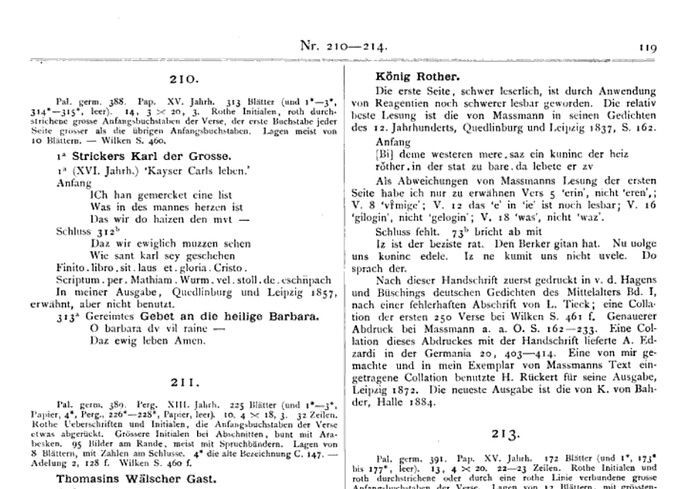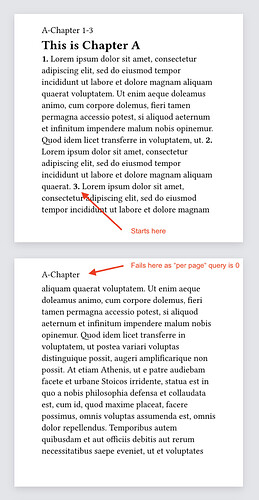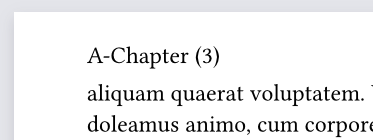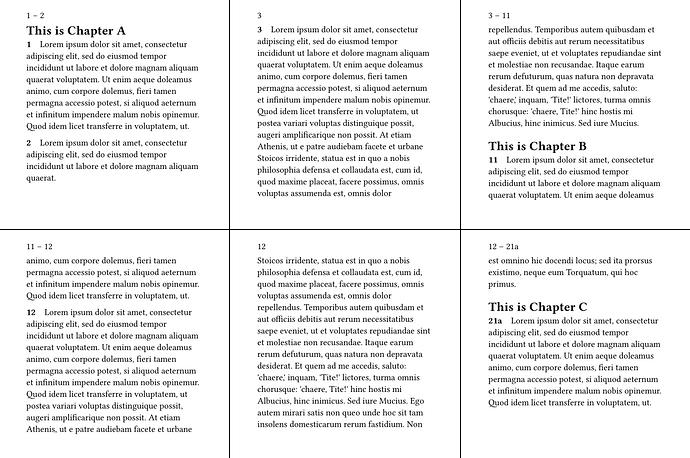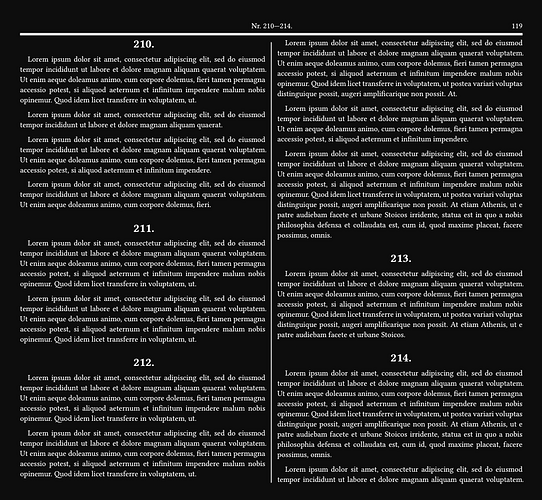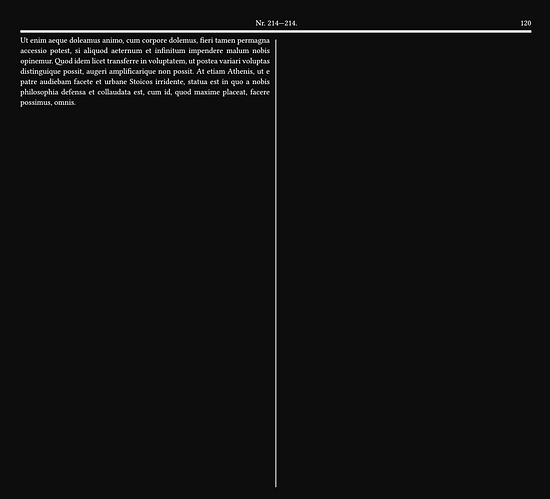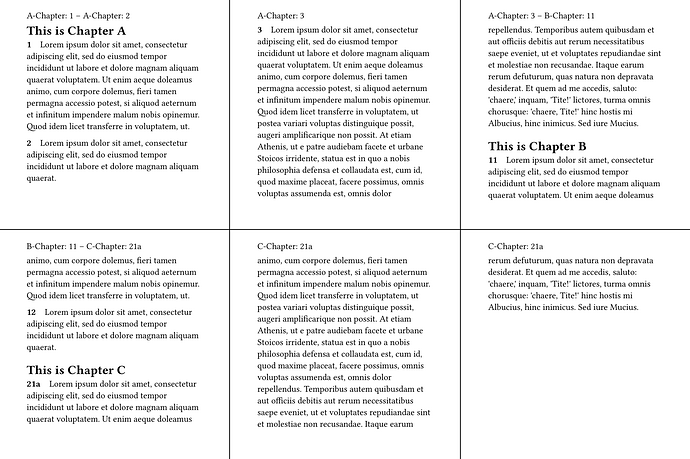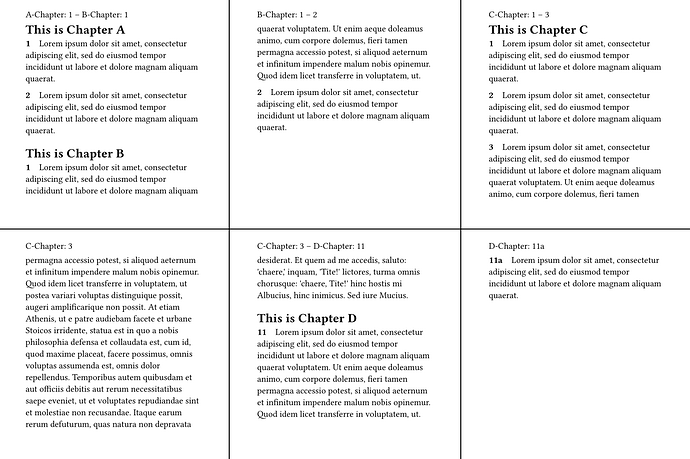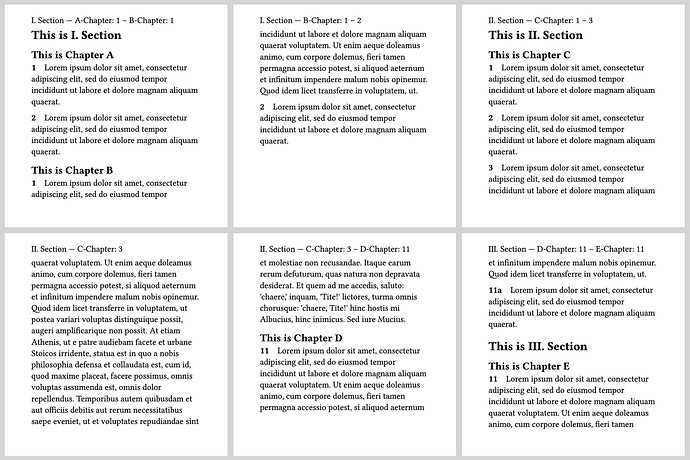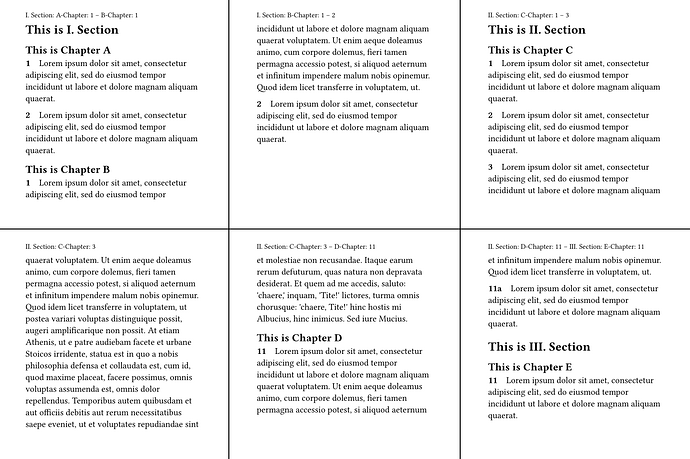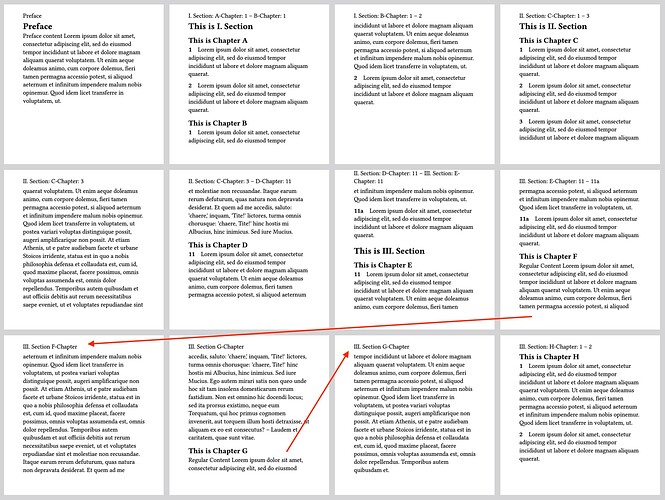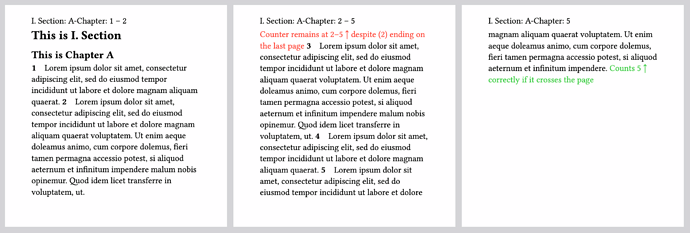I’m trying to layout pages that contain numbered paragraphs and want to give the reader a better overview where they are (e.g. site contains paragraphs 1–7). Something like this:
What I’m struggling with: Paragraphs that span multiple pages and finding the best possible solution overall. Paragraphs can contain linebreaks and formatting and being able to link to them would be cool in the future.
My first approach of counting the elements was mistaken thinking, as the content itself is already numbered (differences in numbering/doubled numbers). I’ve also realized that wrapping the elements like #par[id: "1", lorem(50)] doesn’t bring obvious benefits in comparison to #par(1)[1.]~#lorem(50) (par numbers attached to the following content) in terms of querying.
My current quite sorry working example is:
Code
#set page(width: 100mm, height: 100mm)
#let par(id: none, body) = {
show heading.where(level: 4): it => {
set text(weight: "regular")
[#strong(id + ". ")] + it.body
}
heading(level: 4, supplement: id)[#body]
}
#show heading.where(level: 1): it => {
pagebreak(weak: true)
it
}
#set page(
header: {
context {
// Getting current Chapter title (supplement)
let headings = query(selector(heading.where(level: 1)))
let h = headings.filter(h => h.location().page() <= here().page()).last()
if h != none {
h.supplement
}
// Get paragraphs on current page
let paragraphs = query(selector(heading.where(level: 4))).filter(h4 => here().page() == h4.location().page())
if paragraphs.len() == 0 { } else if paragraphs.last() == paragraphs.first() {
[ ] + paragraphs.first().supplement
} else {
[ ] + paragraphs.first().supplement + "-" + paragraphs.last().supplement
}
}},
)
#heading(level: 1, supplement: "A-Chapter")[This is Chapter A]
#par(id: "1", lorem(50))
#par(id: "2", lorem(20))
#par(id: "3", lorem(150))
#heading(level: 1, supplement: "B-Chapter")[This is Chapter B]
#par(id: "11", lorem(50))
#par(id: "12", lorem(20))
#heading(level: 1, supplement: "C-Chapter")[This is Chapter C]
#par(id: "21a", lorem(50))
This leads to:
What I actually like about the approach: #par(id: "1", lorem(50)) the id as a string gives total control over the ID it can also be I. or 22a whenever needed. Even though I have to “abuse” supplement to access it. Using the headline also makes the paragraphs potentially linkable.
What my questions are:
-
How can I use state (or something else?) to carry the last paragraph number to the following page(s) theoretically a paragraph could span multiple pages?
-
I don’t feel this is the best solution to achieve what I want. I’m fluctuating between “this is overengineered” (maybe I could just get the highest ID without querying) and this is stupid (setting ID as string, than using supplement). Is there overall a better approach?
Help and guidance greatly appreciated I just couldn’t figure it out :x
